Hydrogen is garnering attention as a crucial energy resource in achieving carbon neutrality since it does not emit carbon dioxide (CO2) when combusted as an energy source. As a global pioneer in utilizing hydrogen, Japan is striving to achieve decarbonization by further promoting hydrogen energy.
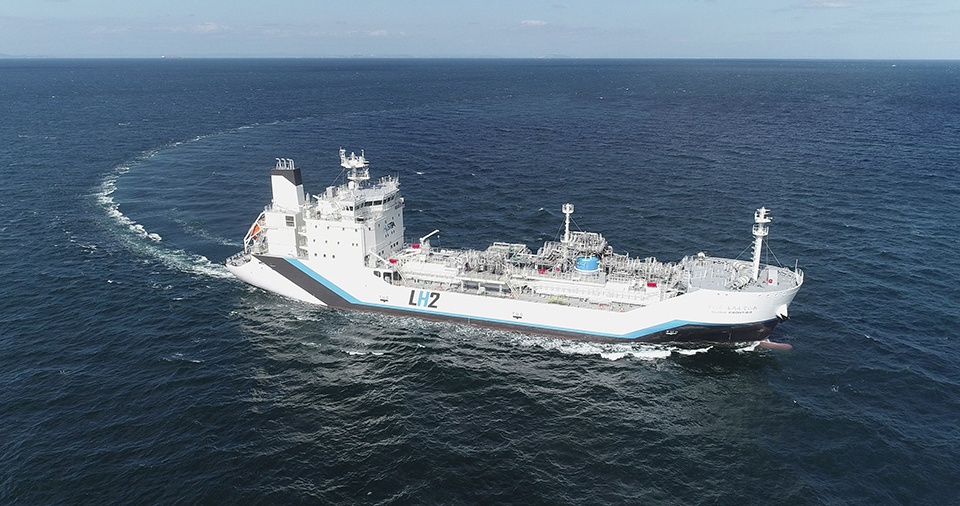
Developing hydrogen carriers is critical to creating an international supply chain. Shown in the photo is the Suiso Frontier, the first-ever liquid hydrogen carrier.
With the effects of global warming-induced climate change becoming an increasing threat, many countries and regions are accelerating their efforts toward carbon neutrality for the sake of sustainable development. One of the keys identified for realizing the important goal of achieving carbon neutrality is energy produced through hydrogen, the combustion of which produces no CO2 emissions. In the “Green Growth Strategy,” formulated in response to Japan’s pledge to become carbon neutral by 2050, hydrogen-use was positioned as one of the top priorities. Up to JPY 370 billion (USD 3.4 billion) of Japan’s 2-trillion-yen fund to support the development of decarbonization technology has been allotted to hydrogen projects.
In addition to producing no CO2 when combusted, hydrogen’s advantage is that it offers various applications, including power generation and heating. The Government of Japan has been an early mover in the field, drawing up a hydrogen utilization roadmap in 2014 and formulating the Basic Hydrogen Strategy in 2017, the first of its kind in the world. Japan has also backed the development of fuel cells, which generate electricity and heat by combining hydrogen with oxygen. In 2014, Toyota Motor Corporation released the Mirai, the world’s first mass-produced fuel cell vehicle. Further development will produce synthetic fuels for use in aircraft and maritime vessels, which are made by reacting hydrogen with CO2 captured from factories and elsewhere.
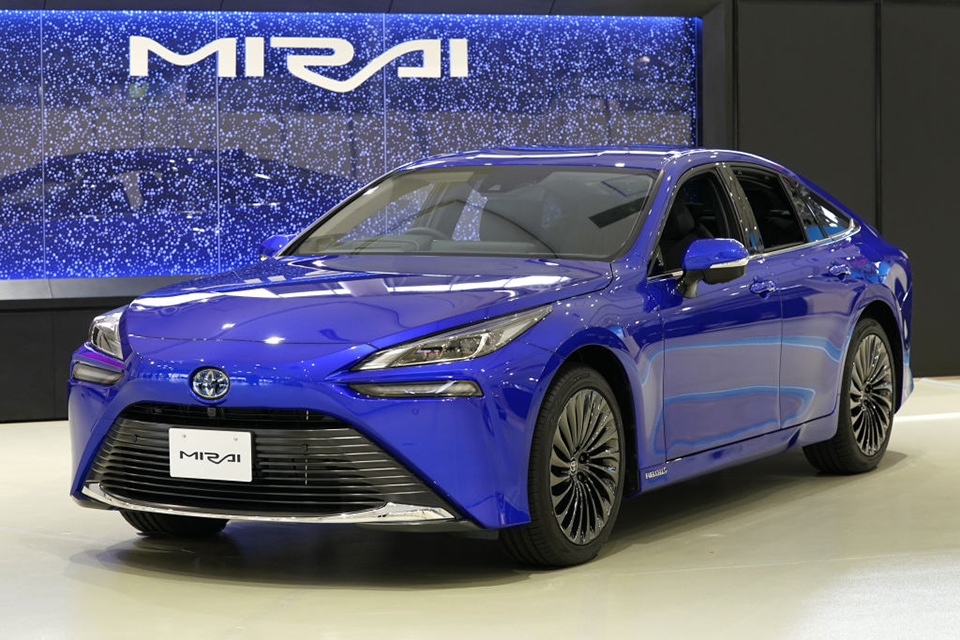
The Toyota Mirai, the world’s first mass-produced fuel cell vehicle, was released in 2014.
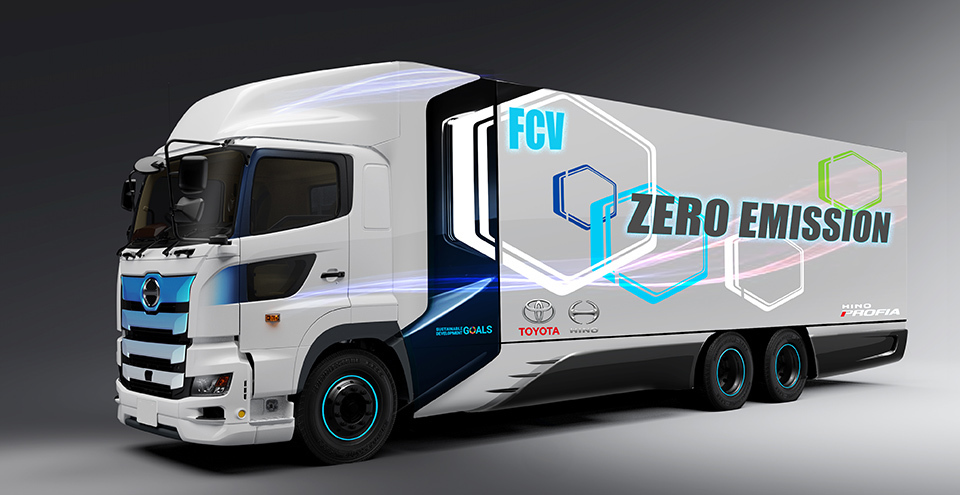
Fuel cells are also being developed for heavy-duty trucks, which account for a high proportion of CO2 emissions by commercial vehicles.
Although hydrogen is rarely found naturally on Earth as an isolated substance, it can be produced from various raw materials. One method is to make hydrogen from fossil fuels and capture the CO2 released as a byproduct. Another is to use renewable energy to extract hydrogen from water through electrolysis. In addition, since liquefying hydrogen through ultra-low temperatures (below -253°C) reduces its volume, allowing compact storage and transportation, renewable energy could be widely distributed if kept in that form.
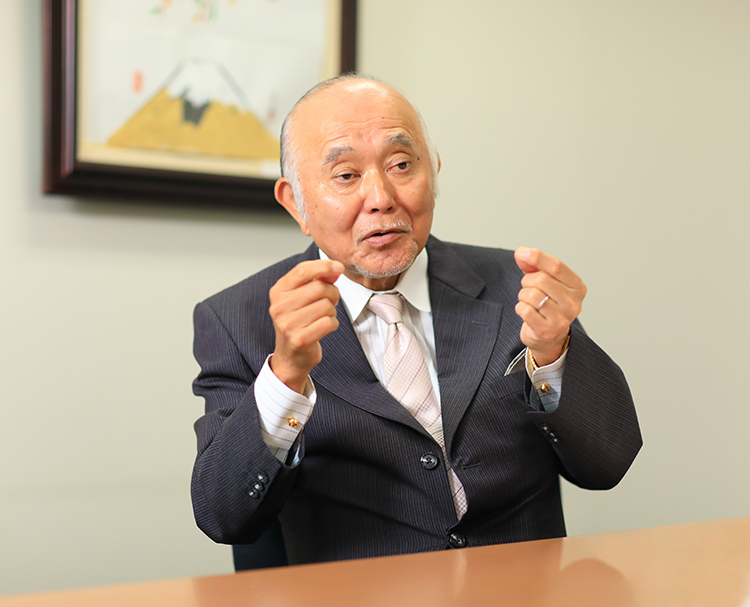
KASHIWAGI Takao, emeritus professor at the Tokyo Institute of Technology and chairperson of the Council for a Strategy for Hydrogen and Fuel Cells, says, “Because of its powerful chemical industry, Japan could become an energy exporter by producing carbon-free synthetic fuel.”
One possibility is the development of an international hydrogen supply chain. Kawasaki Heavy Industries, Ltd. has developed the Suiso Frontier, the world’s first liquid hydrogen carrier. As early as this fall, Kawasaki Heavy Industries will conduct a verification test in which hydrogen—produced in Australia from the country’s affordable and abundant lignite with carbon capture and storage technology—will be liquefied and then carried to the port of Kobe, Japan. If hydrogen can be transported by sea, then places that can generate large amounts of affordable renewable energy could supply hydrogen for shipment across the globe. The use of hydrogen in sectors such as transport, industry, and power generation would contribute to decarbonization.
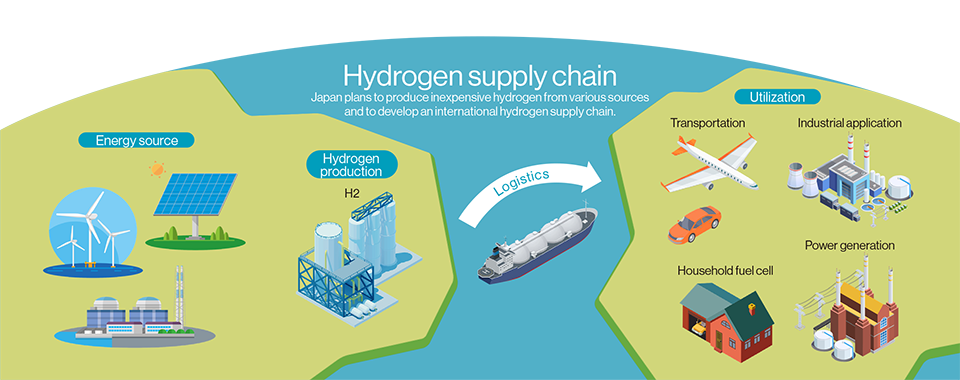
Meanwhile, Kashiwagi says that community-level approaches to steadily promoting the local production and consumption of hydrogen are also vital to accelerating the creation of a hydrogen-based society. For example, the town of Namie in Fukushima Prefecture uses solar power to produce hydrogen in a pilot project to provide electricity to households in the area.
“No country can build a hydrogen society by itself,” Kashiwagi said, adding, “Japan will work with the international community to build a global society that can enjoy the benefits of hydrogen energy, thereby contributing to the achievement of carbon neutrality around the world.”






























